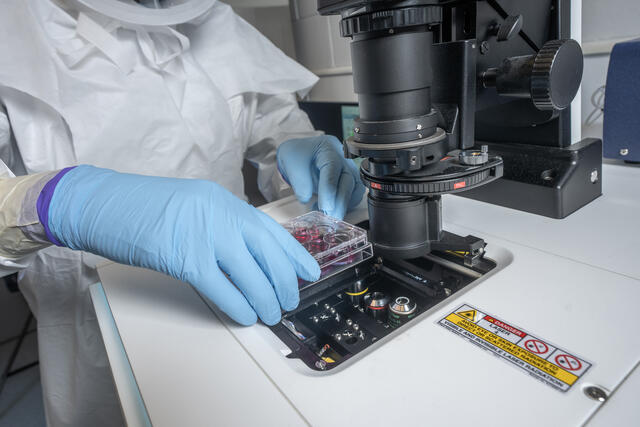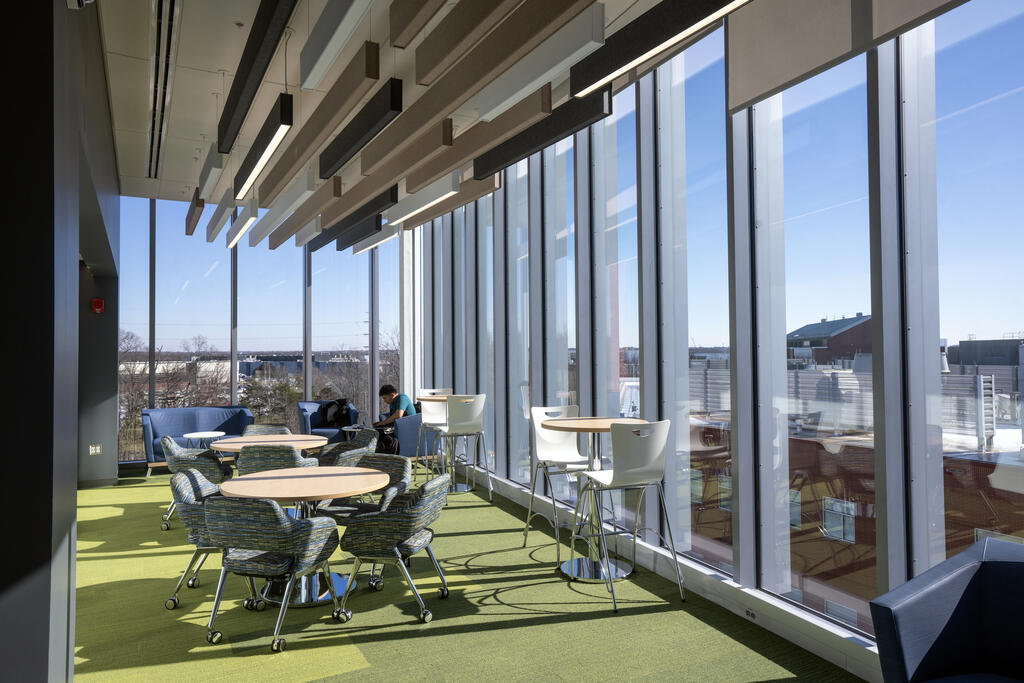Admission CTAs
Dean's blog: Collaboration: Risk or Reward?

It’s been a very busy time for the College of Science at George Mason University. Our administrative, research, and academic teams have brought forward countless community building programs, inspiring educational pathways, and new research discoveries. Our productivity is in part fueled by our strong and effective collaborations. Yet, as we consider areas of opportunity across our scientific enterprise, there are some who still work within silos. I’m not suggesting every project needs a team. That said, many suggest there are countless benefits from including others in our work. Surely, you've all heard the buzz words ad nauseam. Multidisciplinary collaborations. Group brainstorming and blue-sky thinking. Leveraging scale and synergies.
What are the benefits of not collaborating? Here’s a quick list. Solitude. Focus. Control. Less stress. Maybe even saving time (at least in the short term). Yet at what cost?
Some suggest 1+1=3, the concept that collaborating brings forth an idea, perspective, hypothesis, discovery, or end product that is greater than the sum of its parts.
This blog from Mural, an organization whose business is to foster collaboration through their software platform, suggests some strong benefits on the other positive side of the 'why collaborate' list. Collaborations offer a gateway to diverse perspectives and points of view. The benefits of collective creative problem solving and multiple eye review usually allow projects and teams to put forth better work. Collaboration also fosters greater trust and communication, ultimately forming a stronger community. People are simply better together.
Don't take my word for it. Just ask some successful scientific collaborators within George Mason University. We recently announced Peter Plavchan is leading a dozen universities and NASA partners who recently launched the uniquely proposed Landolt space mission. Jessica Rosenberg and the QSEC are partnering yet again to deliver the popular and impactful Quantum Pathways program with George Mason's College of Education and Human development. And how about Geoffrey Gilleaudeau and Mariano Remírez and their colleagues from Italy, Duke, and CalTech who worked together on a first-time discovery assessing suffocating oceans from the Jurassic ageto today. These collaboration examples are but a few from the past month that demonstrate the benefits of working together.
Of course, there are certainly risks and challenges to collaborate effectively. Your idea may not be the one ultimately pursued. It might take longer to get a project done. You might lose some control of the project's direction or end result may be different than expected.
But how can we work to build trust in collaborators who many times may work or think quite differently than you do? Good collaborations can actually start quite simply. Take this example. Two years ago, our Department of Mathematical Sciences chair connected with the director of our Interdisciplinary Program in Neuroscience supporting a request from one of her faculty to collaborate. Might one of the neuroscientists be open to discussing topics related to place cells (space-encoding neurons) with a mathematician, and possibly collaborating/writing a joint proposal? The outreach first led to an informal presentation aimed at non-mathematicians during the department’s semi-regular meetings. Kudos for their collective quick action (the time from the initial request to delivering the presentation was less than 30 days – and this was over the summer). Fast forward a few years and the seminar catalyzed a nice collaboration between Rebecca R.G. and Holger Dannenberg which already generated a 2024 eLife publication plus an NSF grant proposal that seems to be highly regarded for funding. This type of cross-disciplinary work can pay big dividends. Yet another time when the investment of time and openness to broader points of view helped further our college’s efforts.
I encourage each of you to continue to actively seek out ways to expand your individual and the college’s networks. Be open to possibility. Team collaboration can positively impact employee and student engagement, while also fostering inclusivity. Put yourself and your ideas out there and be willing to listen and grow. The risks of not collaborating are usually outweighed by the vast rewards.
~ Cody
